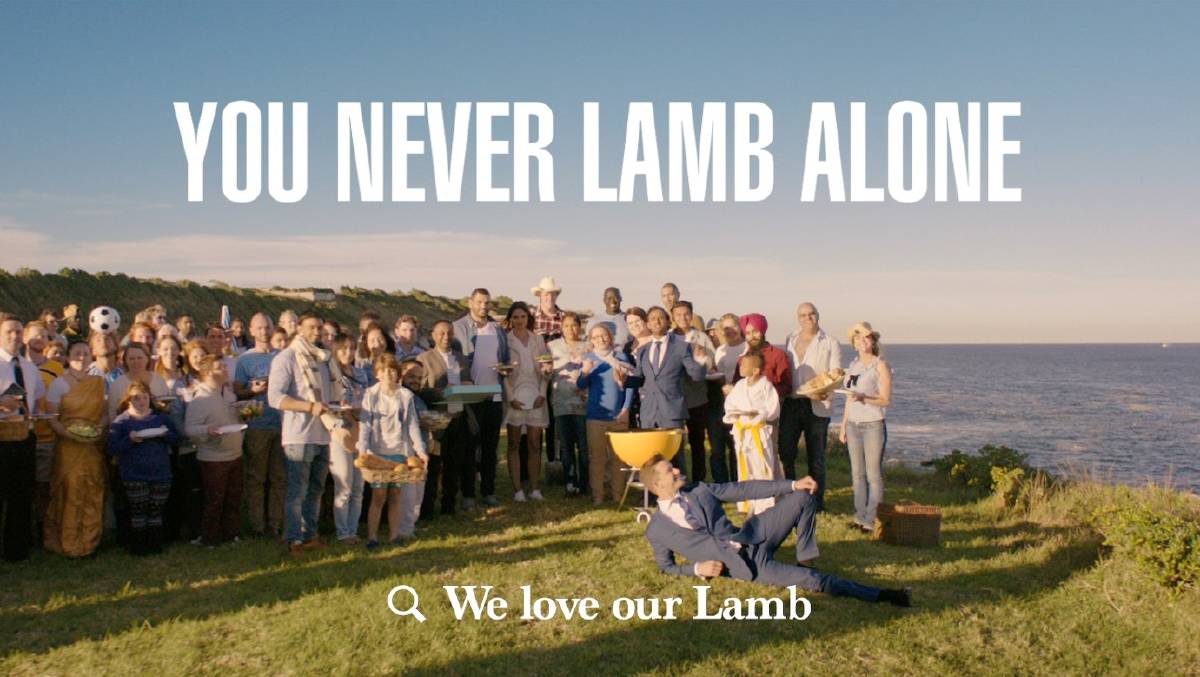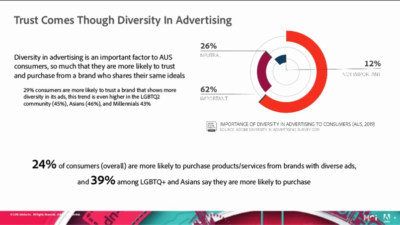Is Australian Advertising Diverse Enough?
According to the Australian Bureau of Statistics, as of 2021 29.1% of Australia’s population were born overseas (7.5 million) with Australia ranking 9th internationally in 2020 for the total number of migrants in its population.
And yet the media and advertising in our country still tells the tale of a largely homogenous society.
Advertisers have a major role to play in defining our national identity, but are advertisers doing enough to reflect the vast cultural difference represented in Australia?
It’s a question obviously reflected on by the Meat & Livestock Australia (MLA) after facing backlash for their decade long ‘Australia Day’ campaign featuring media personality and ‘Lambassador’ Sam Kekovich. In 2016, the MLA did a brand about face to launch their ‘You’ll Never Lamb Alone’ – which featured an inclusive cast of Aboriginal personalities like Cathy Freeman and Greg Inglis, transgender comedian Jordan Raskopoulos, a gay couple and a hearing-impaired woman with the aim to celebrate multicultural Australia.
From this:
To this:
Pia McMorran, Business and Marketing Director at Emotive, says that while diversity in media has improved in the last 10 years, there is still room for improvement.
Emotive is the Sydney based part agency/ part production company behind ad campaigns like Berlei’s Serena Williams helmed #DOITFORYOURSELF and Optus’ Ricky Gervais Anti-Ad Series – and proudly states that they can help brands use, “…empathy to overcome apathy and connect with their audience.”
“Advertising has come a long way over the past 10 years, we’re seeing more diversity on our screens across not just cultural background, but sexual orientation, gender, and religion,” says McMorran.
“That said, there are plenty of people who still see Australia through a white lens, so there’s still room to grow.”
In an article on the topic featured on SBS online in 2018, Ivor Vaz, a content and engagement manager and migrant proposed, “Australia is a thriving multicultural society, but sadly we haven’t yet embraced that as a national identity and that’s the problem.”
Dr Steven Goodman, Associate Professor, Marketing at the Adelaide Business School, University of South Australia agrees with this sentiment – but says that advertisers could lead the way.
“The bigger problem is that Australian’s don’t know what our national identity is yet. To me, from a marketing point of view, there is an opportunity for brands and advertisers to be inclusive and lead the debate – like big brands such as Qantas did in the marriage equality vote,” says Dr Goodman.
Erin Phillips, Business Director at TBWA/Adelaide, says that our advertising ecosystem has a responsibility to reflect the society we live in.
“Stereotypes filter through our everyday lives and when they aren’t challenged, lead to deeply rooted inequalities in society. The advertising industry is an ecosystem that can positively influence and shape how people see each other and themselves,” says Phillips.
“With this influence, it is my belief that advertisers and marketers have a responsibility to create content that represents all individuals.”
It’s a sentiment shared by Australian consumers. In a survey conducted by Adobe in 2019 of over 1000 Australians, 62% stated that diversity in advertising was important to them. Nearly a quarter of consumers are more likely to purchase products and services from brands with diverse advertisements, with 21% of respondents saying they have boycotted brands that don’t showcase diversity.
So how do we make that change?
In an article on the BCT partners website (a research, consulting, training, technology and analytics firm in the US), the firm outlines three marketing best practices for reaching a diverse audience:
1: Diversify your marketing talent
The best way to reach a multicultural audience is by having a multicultural team. Research is vital in developing strategy and understanding, but this work is better backed up by having diverse perspectives and voices on your team.
“Inclusive marketing means not just reflecting different cultures in your advertising, but having different cultures reflected in the members of the marketing and advertising teams. Having these voices present in the room when decisions are made mean that the cultural representations are more authentic and less tokenistic,” says McMorran.
This issue of representation in advertising spawned the #OnlyOneInTheRoom movement back in July 2021 – with a group of Australian adland professionals from over 20 cultural backgrounds joining forces to launch a platform designed to create a more diverse community. Their aim is work towards a more open, equitable and representative ad industry.
2: One size does not fit all
Putting together a diverse team is an important step in understanding the evolving consumer landscape, however it is also important to understand that there are sub-populations within each audience. One size does not fit all when it comes to messaging, and it’s crucial to remember to not fall victim to homogenous assumptions about different cultures.
3: Understand how cultural beliefs affect marketing
There are many elements that can affect whether a marketing campaign is successful in cutting through to a diverse audience. Language plays an important role, but brands should also be aware that certain types of symbols, numbers and colours hold cultural significance. Marketers need to be aware of these elements to build credibility with that specific audience segment.
Pia McMorran says that social media and digital marketing has aided in expanding how marketers reach multicultural audiences.
“It has completely opened it up. There are more opportunities than ever to reach and engage with multicultural audiences. Not just in their language, but through platforms they use (e.g.: WeChat) and in ways that resonate with them,” says McMorran.
“In addition to going niche to reach certain audiences, we’re also starting to see brands bring increased cultural recognition to mainstream channels – like celebrating Diwali, Ramadan or Lunar New Year.”
While we have certainly come a long way from an angry white man yelling at us about how to be Australian, we still have some ways to go before the rich cultural tapestry that makes up Australia is represented and celebrated in our advertising media.





